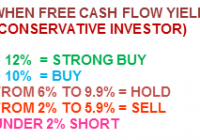A New Income Oriented Multi-Asset ETF Hits The Market
Income investing has been on a tear since last year thanks to the plunge in bond yields. Global growth worries, a relentless slide in oil prices, QE talks in the Euro zone, a ‘patient’ Fed and stepped-up stimulus in Japan resulted in easy money policies across the developed world and in turn dragged yields down. This spurred many issuers to put out new products in this income space, greatly enhancing the number of options at investors’ disposal in this key market segment. Many may think that the income investing space is stuffed, leaving no scope for a new theme to perk up investors’ mood. To prove this group wrong, Master Shares recently released a pass-through ETF with an alternative focus, this time on income. The ETF trades under the name of the Master Income ETF (NYSEARCA: HIPS ). Let’s dig deeper. HIPS in Focus The fund looks to track the TFMS HIPS 300 Index, focusing on 300 securities with a pass-through structure. This is done by looking at securities from the sectors including closed-end fund (CEFs), mREITs, commercial/residential/diversified REITs, business development companies and MLPs. The fund charges 87 bps in fees. How Could it Fit in a Portfolio? The fund does look to be a great way to play the alternative securities space in an ETF form, while its yield will be tough to beat. The current period of low interest rates makes this income paying ETF quite attractive. Investors should note that high income paying securities play a defensive role in a portfolio and help to reduce overall volatility in uncertain times. The pass-through structure is basically created to avoid the effects of double taxation. The product could also be an interesting choice for those reluctant to invest in the regular ways of income investing like junk bonds or high-dividend equities. The constituents of the portfolio are un-correlated in nature and bear less relationship with the typical bond and stock exchanges. Thus, barring the income lure, the product should go a long way in hedging marketing volatility in the portfolio. ETF Competition Since the high yield space sees tough competition due to relentless launches over the last two years, the issuer gave this product an unusual packaging to set it apart from the regular pack. Still, some high income products with a focus on alternative securities are presently operating in the market. These include the likes of the ETRACS Diversified High Income ETN (NYSEARCA: DVHI ), the iShares Morningstar Multi-Asset Income Index ETF (BATS: IYLD ), the SPDR Income Allocation ETF (NYSEARCA: INKM ), the Guggenheim Multi-Asset Income ETF (NYSEARCA: CVY ), the First Trust Multi-Asset Diversified Income Index ETF (NASDAQ: MDIV ) and the YieldShares High Income ETF (NYSEARCA: YYY ). Expense ratio wise, the newly launched ETF looks reasonable as other products charge in the range of 60 bps to 165 bps a year. This is especially true given the product’s focus on pass-through entities and wide coverage from CEFs to MLPs. However, to be a winner in a long-distance race, the issuer should dedicatedly focus on the income part of the ETF. Notably, YYY holds the status of the highest yielding product in the space of diversified ETFs, having yielded about 9.6% as of January 13, 2015. To live up to investors’ expectations, the fund should offer something around that high benchmark, otherwise it could be somewhat prohibitive to asset accumulation, at least to those who are highly yield-starved.
